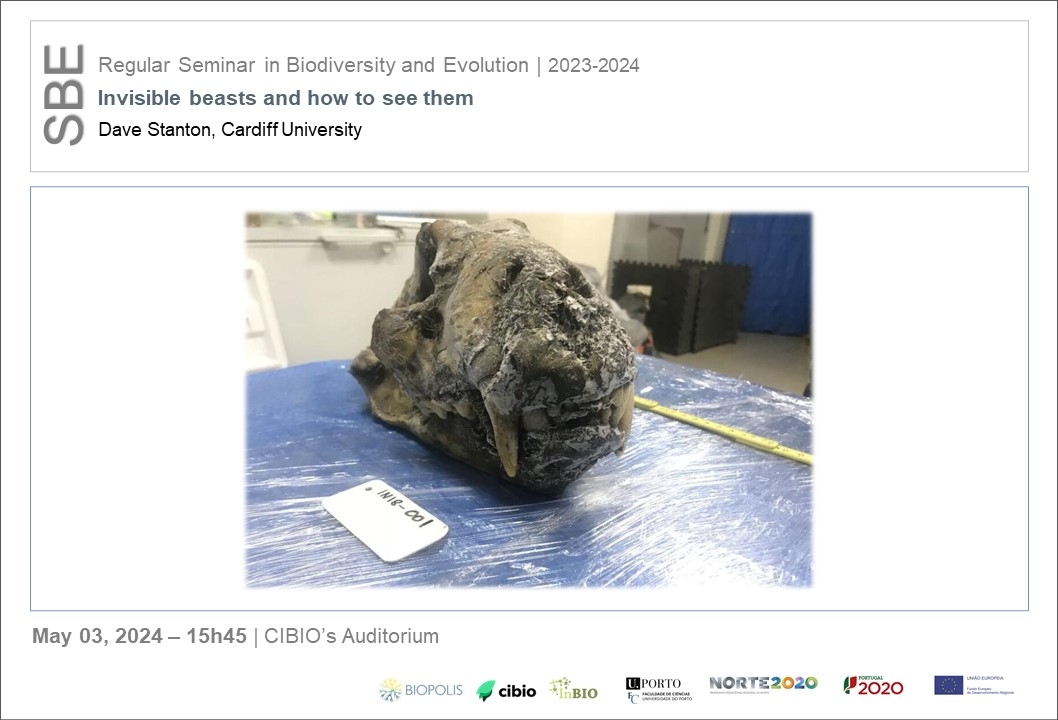Invisible beasts and how to see them
Event
REGULAR SEMINAR IN BIODIVERSITY AND EVOLUTION
May 03rd, 2024
Dave Stanton, Cardiff University | 15h45 | CIBIO's Auditorium

REGULAR SEMINAR IN BIODIVERSITY AND EVOLUTION
Some of the most endangered species today are also some of the most elusive. How can we study these species when we cannot directly observe them? And can we learn from past examples of species that have gone extinct, to better understand what processes have led to current-day biodiversity? I discuss these questions with examples from my research, which is varied in nature, but with a common theme of using evolutionary genetic approaches to better understand creatures that are "invisible" to us in some way. I will discuss how some of the key advances in the field have allowed us to be able to ask increasingly challenging and detailed questions, thereby beginning to shed light on the evolution of some of these "invisible beasts".
I am an evolutionary geneticist interested in understanding how natural and anthropogenic processes are involved in biodiversity change. I believe that to do this we first need an understanding of historic biodiversity. My research investigates this past diversity in wild animal populations, using historic and ancient DNA, and compares it to those alive today. The ultimate aim is to use these comparisons to improve our predictions of how present-day biodiversity is likely to change into the future. I have worked on a large range of different taxa and study systems, with a recent focus on extinct carnivores such cave lions, Homotherium, the Falkland Islands wolf, and ancient wolf populations from Eurasia.
[Host: Maria Joana Silva, Biodiversity of Deserts and Arid Regions - BIODESERTS]
